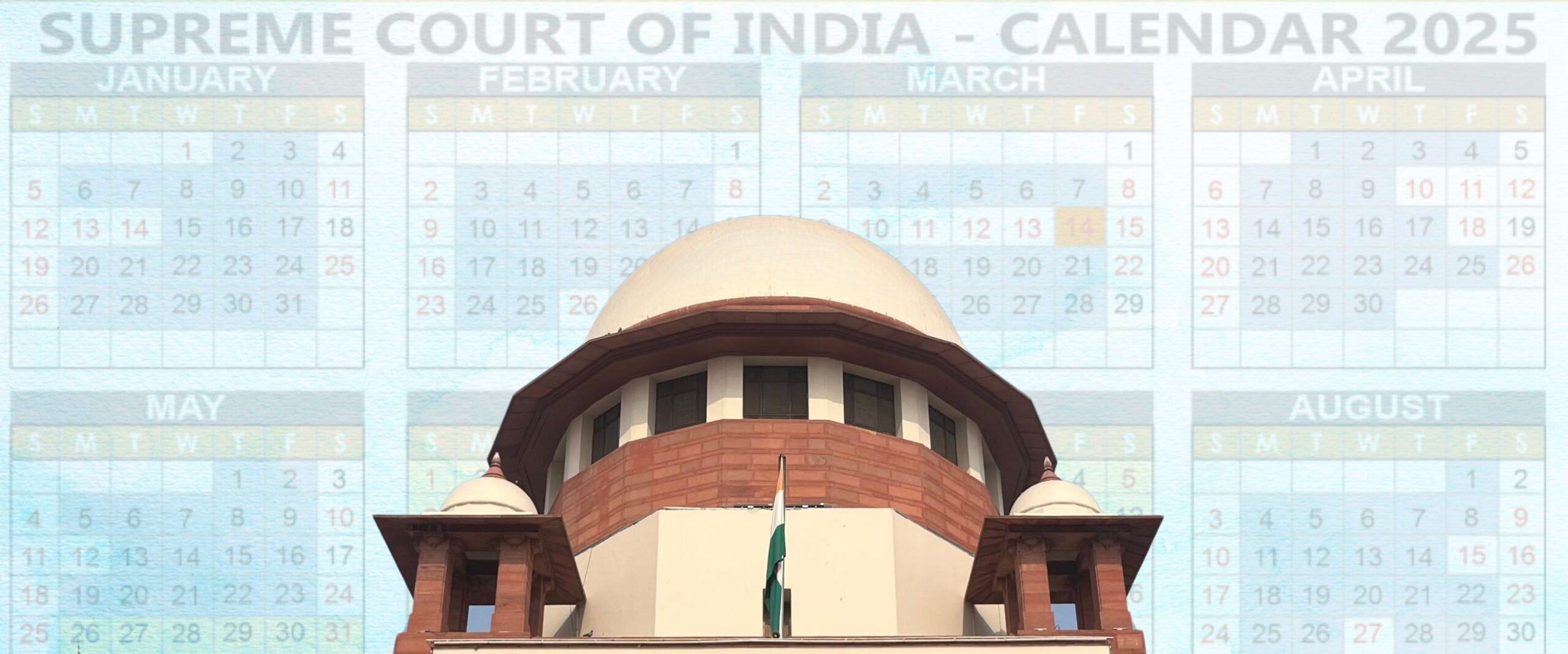Court Data
Supreme Court will work 190 days in 2025
The top court is often criticised for its long breaks. We look at the number of working days to see if the breaks are really too long

Every year the Supreme Court observes a six or seven week ‘break’ between May and July. A few sitting judges of the Court take up some matters through the period. Until a recent rebranding, this period was called Court Vacation and the benches were called “Vacation Benches”. This year, the break is 35-days long.
Often citing the mammoth 80,000 pending case, commentators believe that a break “delays justice”. Judges claim that the break is much needed—for them as well as advocates. They argue that judges take this time to recuperate from an otherwise unforgiving schedule, take time to read and write judgements.
In 2025, the Court renamed its down-time as “Partial Court Working Days Benches”. V. Venkatesan of the Supreme Court Observer, suggests the rebrand was employed to combat criticism from amateur observers who believe the court to be slacking off.
In this article, we look at how the Court’s break stacks against the number of days it has worked. We’ve relied on the number of working days marked in the Supreme Court’s 2025 Calendar.
Figure 1 shows the total number of working days the Court observes in each month of the year. The working days are shown in red and the partial working days are in yellow. Partial working days are observed over May, June and July.
According to the 2025 Calendar, the Court works for 190 days of the year, excluding partial working days and weekends.
The only time when the Court is on a complete break, when there aren’t any vacation or partial Benches, is during the Holi, Dusshera, Diwali and Christmas holidays. Each of these breaks last about eight to ten days.
The number of working days has remained around 190 in the past few years with the exception of the COVID-19 affected years.
Number of working days of some top courts around the world
The Indian Supreme Court works for more days compared to some other apex institutions. We compared the active working days of our Supreme Court to other apex courts across the world.
Figure 2 illustrates a comparison of the total number of working days for various international top courts relative to India.
The Kenyan Supreme Court, which shares institutional similarities with India, operates for 196 working days, following a distinct term calendar.
Neighbouring Bangladesh’s Supreme Court works for 181 days. They follow a similar structure as India, without any term breaks.
The Supreme Court of the United Kingdom has 188 working days, also adhering to a term calendar and observing weekends and bank holidays.
Notably, the High Court of Australia and the United States Supreme Court have 97 and 65 sitting days respectively.
It is crucial to note that the total number of working days is not a sole indicator of productivity. This is because certain courts manage smaller dockets, thus requiring fewer annual working days.
Conversely, some courts, such as the Supreme Court of India, possess both appellate and constitutional functions. They also have a larger number of judges, enabling them to handle a significantly higher volume of cases even with a shorter total number of working days compared to some other jurisdictions.
Productivity Parameters
The Indian Supreme Court faces great pendency challenges. Data shows us that it also works more than most other courts of its stature. This may encourage us to look elsewhere for the cause of inefficiencies and delays in the judicial process.
The Court’s hopes on dispelling the view that it takes a leisurely break was evident this year as it put the five-seniormost judges of the Supreme Court on its Partial Court Working Days Benches. The move is unusual—typically junior judges of the top court take centre stage during vacation.
It appears that the Court is sending out a strong message that no one is above the challenges facing the court, and that it remains steadfast in its dedication to tackling them.